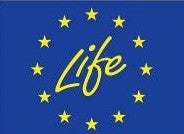Chondrichthyan observations with ROV in the Western Mediterranean and Southern Bay of Biscay
In 2006, 2007 and 2008, Oceana employed an ROV to complete bionomic seabed surveys in the Mediterranean Sea and Bay of Biscay, between 50 and 350 meters depth. Information on positions, depths and times of observations was recorded, providing new data on the geographic distribution and bathymetric range of chondrichthyans. Fourteen species were found: five … Read more

